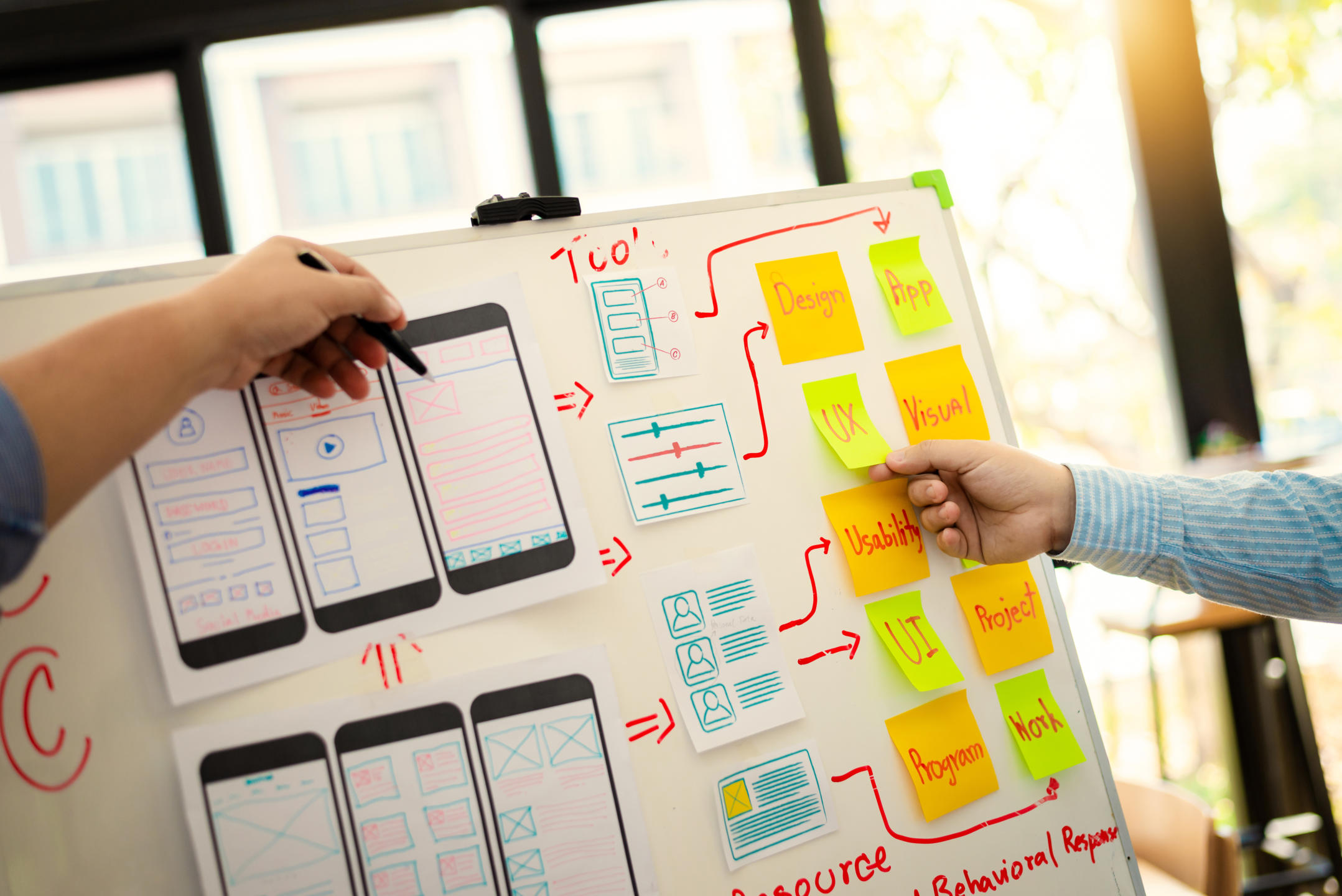
Historically, the world of user experience (UX) has been highly focused on deliverables.
The only problem is those deliverables, such as wireframes, flow diagrams, and content inventories, aren’t always used as part of the project.
With all these deliverables required for every project, UX designers often end up being measured by all the different deliverables they create, versus the quality and outcome of the experience.
As the marketplaces continue to evolve, being agile and able to get things into production faster is critical, and that’s why there’s been a shift towards lean UX.
Here’s lean UX explained, so you have everything you need to know.
Lean UX Explained
Lean UX is a method for creating streamlined and visitor-centric web offerings by taking a less is more approach. It’s focused on what’s of value to visitors and will help support company goals, and cutting waste, which is considered anything not used in the development of a working product.
When running the lean UX model, departments across an organization work together to identify key requirements and focus on the “need to haves” versus “nice to haves.” Collaboration is a key component of lean UX and feedback is provided by stakeholders at regular intervals.
Projects are stripped down to their key components, and only information critical to implementation is included. Instead of requirements, lean UX designers focus on a problem statement and then work with the team to come up with assumptions that will be used to create a hypothesis.
With lean UX, all of the design cycles are shortened. While the exact process each designer follows may vary slightly, the main process flow generally follows a flow of:
Concept > prototype > internal validation > external testing > gather data from user behavior > iterate
The Benefits of Lean UX Explained
Lean UX is about continually improving and experimenting on all products and offerings. As the needs of your customers change, you can quickly adapt using this approach.
Much of the focus for lean UX is on creating less waste. By shortening the design process and skipping many of the traditional requirements, time isn’t spent on things that won’t see the light of day. With less waste, you also gain greater efficiency. Ultimately, by cutting the waste, you’re saving both time and money and your speed of implementation is much faster.
Lean UX also allows designers and stakeholders to identify issues sooner. Because lean UX is heavily focused on collaborating with stakeholders, it’s easier to identify potential problems while also ensuring the entire team is aligned on the vision. With this approach, you also end up with better collaboration. Not only are you collaborating with stakeholders, but lean UX teams are usually smaller teams, which is optimal for communication and forming strong partnerships with colleagues.
At the heart of lean UX is trying things out to see what works, so this approach allows for more flexibility and creativity. It gives teams permission to fail. By fostering experimentation, lean UX team members feel empowered to take risks and think outside the box.
How Lean UX Can Help With Marketing and More
Most of the companies that thrive are those that focus on customer experience first and foremost. In order to deliver a top-notch customer experience, you need to know what customers want and make sure those wants are prioritized.
The true power of lean UX is that by following this process, you identify, analyze and prioritize your top tasks in shorter cycles, allowing you to be more responsive.
Lean UX also allows for faster insight from actual users. The testing phase is executed much sooner in the process than in traditional design, so you get to hear from frontline users faster and then can look at implementing feedback in real-time. For example, if your marketing campaign isn’t yielding the results expected, you have the ability to quickly analyze your user data and make some adjustments.
Exploring the World of Lean UX
When looking at lean UX, you can easily see that there are many benefits of this approach worth exploring. For those looking to pursue a career in UX Design, lean UX offers an opportunity to work under a different model that is quickly becoming the preferred method for designers — making your new skills both highly valuable and relevant.
Are you interested in pursuing a career in a creative industry that moves with the fast past of technology?
The Udacity UX Design Nanodegree program offers students an opportunity to learn how to create user experience designs ready to be handed off to development. You’ll learn the skills you need to be successful while also building a portfolio you can showcase to future employers.






